Chota Char Dham | Char Dham Of Uttrakhand
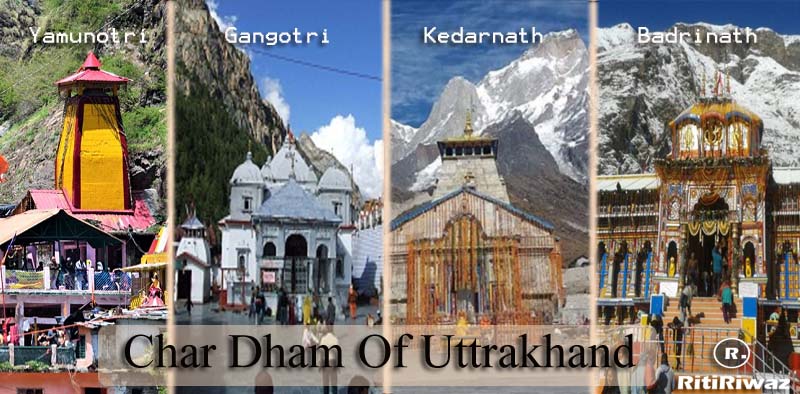
Chota Char Dhams are the famous four holy places of Hindu Pilgrimages, which are nestled among the lofty peaks of the Himalayas in Uttarakhand. Chota Char Dham छोटा चार धाम literally means ‘the small circuit of four abodes/seats’ is an important a shorter version of the Char Dham pilgrimage of Hindus in the Himalayas.
Also known as Char Dham Yatra in Uttarakhand, this small Char Dham includes Kedarnath (Shiva Jyotirlinga), Yamunotri (the origin of the Yamuna), and Gangotri (the origin of the Ganges) besides Badrinath. On Akha-Trij or Akha-Teej, the Char Dham Yatra Of Uttrakhand begins and closes 2 days after Diwali which is Bhai-Bij Day (or Bhai Dooj).
The best time to take the yatra is in mid-May to July and September to October. During monsoon July and August, there may be heavy rainfall resulting in chances of a roadblock. Traditionally, the pilgrimage begins from the west and ends in the east similarly Chardham Yatra in Uttarakhand commences from Yamunotri to Gangotri then Kedarnath and Badrinath.

Yamunotri (the origin of the Yamuna)
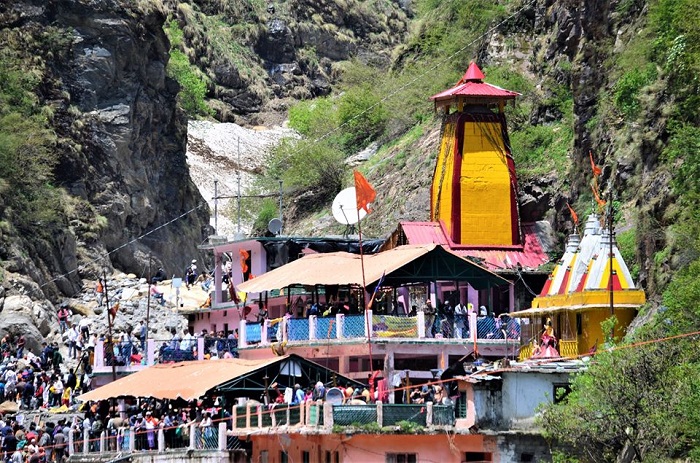
Yamunotri is said to be the first stop of the Chardham Yatra. It is situated at a height of 4,421 meters from sea level from where the second holiest river Yamuna originates.
The actual source is a frozen lake of ice and glacier located on Kalind Mountain at a height of 4,421 meters above sea level. Situated about 30 km from Garhwal and Uttarkashi, nestled in the lap of the Himalayas this place is known for its hot water springs. The temple is located at the foot of Kalind Parbat near the Banderpooch peak.
The temple of Yamunotri was constructed by King of Tehri Naresh Sudarshan Shah in 1839, but was damaged due to an earthquake and was rebuilt by Maharani Gularia of Jaipur. The temple is dedicated to Goddess Yamuna and has a black marble idol of the goddess.
It is believed that bathing in its water will cleanse you from sins and grant immortality. One of the unique aspects of the temple is the presence of a hot water spring where it is possible even to cook food. The prasad given in the temple is cooked in a hot spring known as Surya Kund.
Gangotri ( the origin of the Ganga)
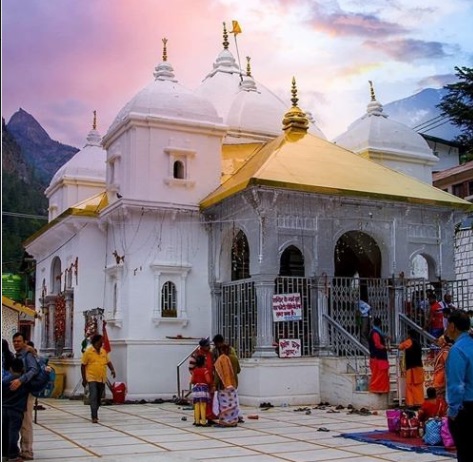
Gangotri Dham is dedicated to Goddess Ganga and is the second stop after visiting Yamunotri where pilgrims worship Ganga Mata. In the Hinduism river, Ganga is considered very pure and sacred and it is believed bathing in the river causes the remission of sins and facilitates Moksha.
Gaumukh Glacier, the natural source of Ganga, is 18 km from Gangotri town. The river is called Bhagirathi at the source and acquires the name Ganga (the Ganges) from Devprayag onwards where it meets the Alaknanda.
The story of Gangotri dates back centuries when the goddess Ganga, after her penance, transformed herself into the river Bhagirathi to dissolve the sins of the ancestors of King Bhagirath. The temple was built by the Nepalese general Amar Singh Thapa at the beginning of the 18th century and is situated at an altitude of 3200 meters above sea level. The temple remains closed during winter due to heavy snowfall and is open from May to October.
Kedarnath (Shiva Jyotirlinga)
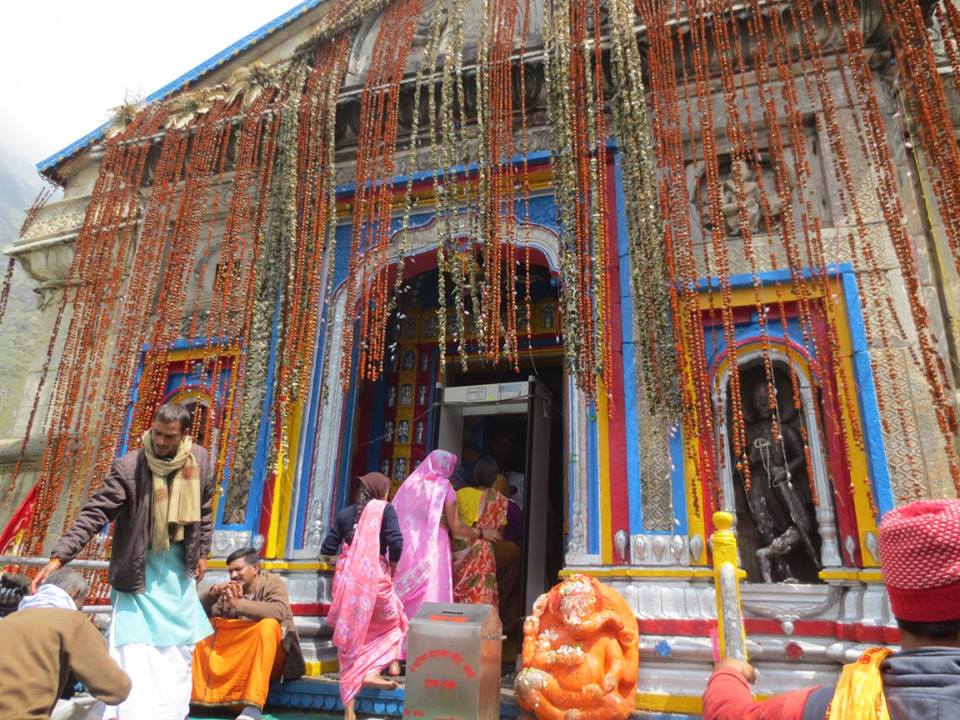
The third stop of Chardham Yatra is Kedarnath Dham which falls in the Rudraprayag district of Uttarakhand and is one of the most sacred pilgrimages of Lord Shiva. It is built at a height of 3,584 meters above sea level, in the lap of majestic snow-capped mountain peaks with mesmerizing views, Kedarnath is a deeply spiritual experience for travelers.
The temple is dedicated to lord shiva ‘Panch Kedar‘ and is one of the 12 Jyotirlingas of Lord Shiva. It is the northernmost Jyotirlinga and is close to the source of the holy river Mandakini. Kedar meaning powerful is another name of Lord Shiva the protector and the destroyer.
According to Vayu Puran, Vishnu as Narayana came down to earth for the help of mankind. He landed at Badrinath, which was then the abode of Shiva. At Narayana’s request, Shiva accepted Kedar as his permanent abode. Kedarnath is also part of the Panch Kedar yatra. The temple was being constructed by Adi Shankaracharya who attained Samadhi in the shrine seen behind the Kedarnath temple.
Badrinath (Baikuntha Dham)
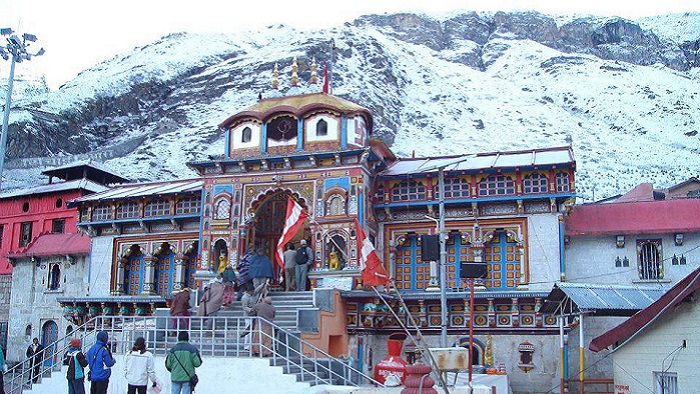
Badrinath is a shrine dedicated to Lord Vishnu also called Baikuntha Dham is located in the Chamoli district of Uttrakhand.
Adi Shankaracharya is believed to have founded it when he immersed the Saligram idol of Lord Badri in the Alaknanda River and installed it in a cave near the Tap Kund or ‘Hot Springs’ just before the Badrinath temple. These hot springs are considered medicinal and it is customary to bathe before entering the Badrinath temple.
The temple is located between the two mountains Nar and Narayan and the Alaknanda River flow along with it. It is the only shrine that is part of both Chota Char Dham and India Char Dham Yatra. According to legend, Lord Vishnu meditated here while his consort Lakshmi took the form of a berry (Badri) tree to offer him shade.
Badrinath is one of four pilgrimage centers in four corners of India. Among them were Badrikashram (Badrinath Temple) in the North, Rameshwaram in the South, Dwarkapuri in the west, and Jagannathpuri in the east.
Despite the four sites of Yamunotri, Gangotri, Kedarnath, and Badrinath being very close to each other, it is impossible to make any direct roadway between them due to being situated on the high mountain region.






